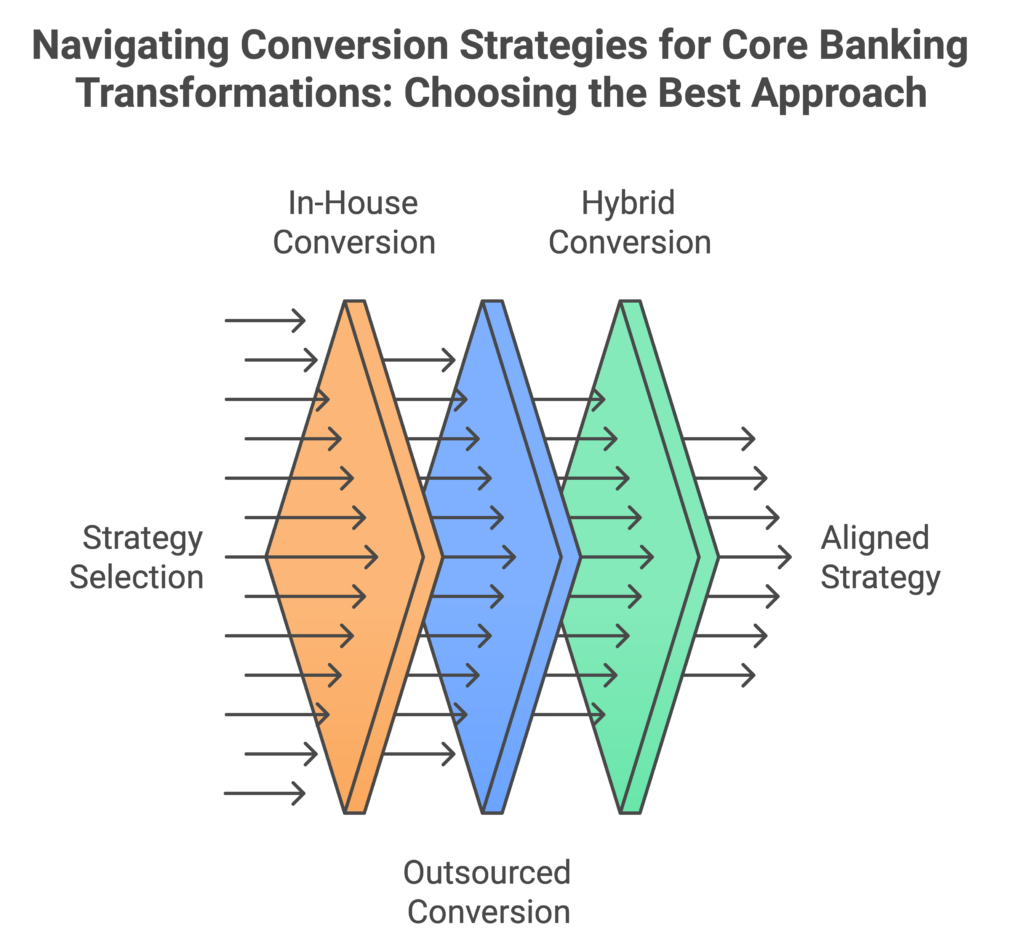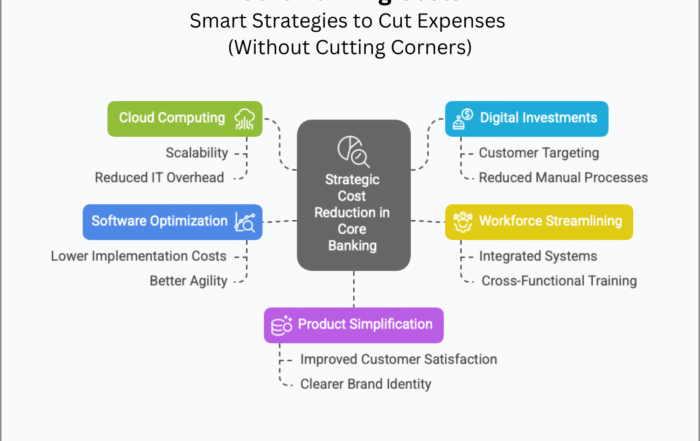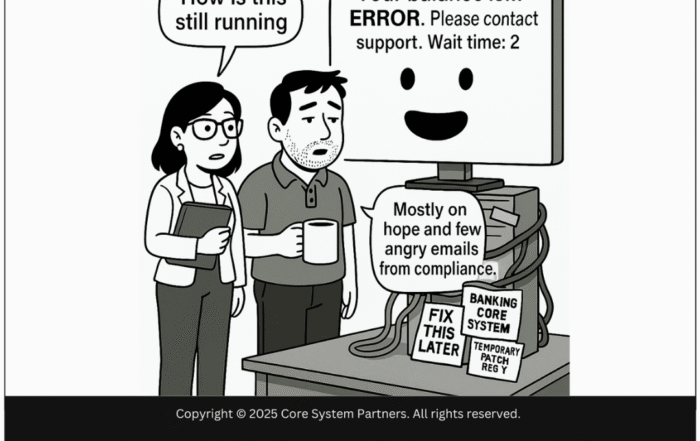
Strategizing Core Banking Transformation: In-House, Outsourced, or Hybrid—Choosing the Right Path for Success.
Have you ever felt like navigating a maze without a map? That’s how complex choosing the right core banking transformation strategy can seem. Whether it’s a complete overhaul or a crucial system update, your path for this transformation can significantly impact your institution’s efficiency, customer satisfaction, and long-term success. Today, we’re delving into the three primary strategies, In-House, Outsourced, and Hybrid approaches, to help you make an informed decision that aligns with your bank’s specific needs.
Understanding the Importance of the Right Conversion Strategy
The digital transformation race in banking is more competitive than ever, making the stakes incredibly high. The correct conversion strategy ensures seamless system integration and enhanced operational efficiency and prevents potential pitfalls like delays and budget overruns. Let’s unpack the strengths and challenges of each approach to guide your decision-making process.
The Three Main Conversion Strategies
1. In-House Conversion
What is it?
In-house conversion means managing the transformation with your internal team. This approach suits larger banks with robust IT departments and business support units that can handle complex system overhauls from within.
- Pros: Full control over the transformation, leveraging intimate organizational knowledge.
- Cons:
- Potentially resource-heavy, requiring significant time and internal expertise.
- Potentially lacking transformation expertise
2. Outsourced Conversion
What is it?
This strategy involves partnering with external experts to guide and implement your transformation, benefiting you from specialized knowledge and technology.
- Pros: Access to top-tier expertise and potentially faster completion times.
- Cons: Less direct control and dependency on external schedules and frameworks.
3. Hybrid Conversion
What is it?
A blend of in-house and outsourced efforts, the hybrid approach is tailored to the specific needs of different departments within the bank, allowing for flexibility and specialization where needed.
- Pros: Balanced control with access to external expertise where it’s most beneficial.
- Cons: Requires meticulous coordination to manage internal and external teams effectively.
Aligning Strategy with Organizational Goals
Choosing the right strategy involves more than matching capabilities—aligning with your bank’s risk tolerance, operational needs, and future vision. Consider the following:
- Operational Realities: Does your current IT infrastructure support the necessary changes?
- Risk Tolerance: How much disruption can your operations handle during this transition?
- Future Vision: What are the long-term goals of this transformation?
Critical Considerations for Each Strategy
- In-House Strategy: This is best for banks who can manage complex projects and desire complete control over every step.
- Outsourced Strategy: Ideal for banks looking to minimize internal burden and leverage external innovation.
- Hybrid Strategy: Perfect for institutions that require specialized external input while maintaining overall internal control.
Flexibility and Adaptability in Strategy Choice
The dynamic nature of technological and market developments means strategies may need to be adjusted on the fly. Flexibility in your approach allows you to adapt to unforeseen challenges, ensuring your plan remains relevant and practical throughout the transformation process.
Best Practices for Strategic Decision-Making
- Comprehensive Evaluation: Thoroughly assess the potential impact of each strategy on your operations.
- Stakeholder Involvement: Include critical stakeholders in the decision-making process to gather diverse perspectives.
- Continuous Review: Regularly reassess the effectiveness of your chosen strategy toallow for timely adjustments.
Choosing the right conversion strategy for your core banking transformation is crucial for ensuring a smooth transition and setting your institution up for long-term success. By understanding the pros and cons of In-House, Outsourced, and Hybrid strategies, you can align your choice with your bank’s specific needs and strategic goals.
If you would like an exclusive infographic that goes into further detail, click the image below or read our next article in this series that in depth on In house Conversion Strategies.

#CoreBankingTransformation #ConversionStrategy





